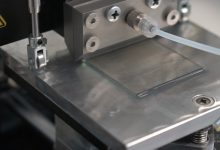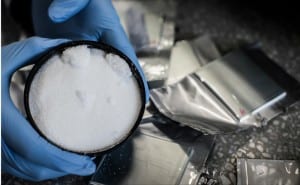Australian Advanced Materials, a West Australian-based tech company developing printable memory ink, has agreed to develop a flexible self-charging battery technology which creates electricity from humidity in the air or the skin.
A subsidiary of Australian “venture builder” Strategic Elements, Australian Advanced Materials (AAM) has been developing its Nanocube Memory Ink technology, which has the potential to inscribe memory and data storage to transparent substrates such as plastic and glass, where traditional silicon storage technologies cannot reach.
Developed at the University of New South Wales, CSIRO, and VTT group in Finland, Nanocube Memory Ink will be combined with an advanced graphene oxide material to develop Battery Ink, a printable ink which can create flexible battery cells which generate electricity from humidity in the air or from humidity on a person’s skin.
“Early stage results are extremely promising as we apply years of experience and intellectual property in electronic inks into the development of a Battery Ink that generates electricity from the environment,” said Charles Murphy, managing director of Strategic Elements.
“From the Automated Robotic Security Vehicle we are building with US giant Honeywell, the ongoing commercialisation of the Nanocube Memory Ink, this new development in Battery Ink, and other commercial activities on the horizon, SOR is generating significant momentum.”
Significant work into using graphene oxide ink has already been conducted by the electronic materials team at the University of New South Wales (UNSW). So far the team has fabricated over 100 battery cells by coating the graphene oxide ink onto glass, with self-charging time using water vapour in the air of approximately 3 minutes.
The battery cells are extremely thin, measuring in at around 10 to 20 microns – thinner than a human hair – generating 0.7 Volts on a cell around 1cm wide, with the potential to get even smaller.
Focusing specifically on the development of Battery Ink, the UNSW electronic materials team is aiming over the next 12 weeks to finalise the materials engineering and optimisation of the ink formulation and to scale-up to a large batch size of battery ink of at least 1 litre. The team further hopes it is able to develop a successful prototype connecting multiple battery cells to produce at least 3.7 Volts.
Technology like this flexible self-charging Battery Ink could have significant implications for use in Internet of Things (IoT) devices – a broad definition for interconnected devices ranging from Amazon Echo smart-speakers through to heartrate monitors and smart watches.
Indeed, an IoT device which is able to integrate such a small and flexible battery which can charge itself from a person’s sweat or the humidity in the atmosphere has obvious benefits for IoT wearables and medical devices.
According to a report quoted by Strategic Elements in this week’s press release (PDF), the global battery market for the IoT device industry was worth approximately $AU12.21 billion 2009 and is forecast to grow to $AU22.3 billion by 2025.










